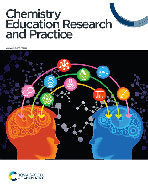Investigating patterns of student engagement during collaborative activities in undergraduate chemistry courses
Abstract
Several studies have highlighted the positive effects that active learning may have on student engagement and performance. However, the influence of active learning strategies is mediated by several factors, including the nature of the learning environment and the cognitive level of in-class tasks. These factors can affect different dimensions of student engagement such as the nature of social processing in student groups, how knowledge is used and elaborated upon by students during in-class tasks, and the amount of student participation in group activities. In this study involving four universities in the US, we explored the association between these different dimensions of student engagement and the cognitive level of assigned tasks in five distinct general chemistry learning environments where students were engaged in group activities in diverse ways. Our analysis revealed a significant association between task level and student engagement. Retrieval tasks often led to a significantly higher number of instances of no interaction between students and individualistic work, and a lower number of knowledge construction and collaborative episodes with full student participation. Analysis tasks, on the other hand, were significantly linked to more instances of knowledge construction and collaboration with full group participation. Tasks at the comprehension level were distinctive in their association with more instances of knowledge application and multiple types of social processing. The results of our study suggest that other factors such as the nature of the curriculum, task timing, and class setting may also affect student engagement during group work.


 Please wait while we load your content...
Please wait while we load your content...